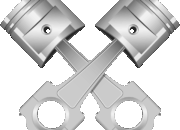The field of biomedical engineering represents a fascinating confluence of biology, medicine, and engineering principles. As technology progresses, one cannot help but marvel at the transformative potential of innovations derived from the intersection of these domains. For those intrigued by the complexities of human health and the role engineering plays in advancing this knowledge, a well-curated reading list can serve as an invaluable resource. Below, we present an array of books that not only illuminate the fundamental concepts of biomedical engineering but also delve into advanced topics and cutting-edge research, catering to the curious innovator.
First and foremost, it is essential to grasp the foundational elements of biomedical engineering. “Introduction to Biomedical Engineering” by John Enderle and Joseph Hess is a seminal work that presents an articulate overview of critical topics, including biomaterials, medical imaging, and biosensors. This book serves as an excellent starting point for readers seeking to understand the principles that underpin the development of medical devices and diagnostic tools.
As readers develop their comprehension of core concepts, “Biomedical Engineering Fundamentals” by R. A. McKee offers a more detailed exploration. This text emphasizes both the theoretical framework and practical applications of biomedical engineering. The author provides compelling case studies that illustrate how engineering principles can be applied to solve complex biological problems. Such case studies not only enrich the reader’s understanding but also inspire innovative thinking.
To grasp the significance of biomaterials within the field, one must turn to “Biomaterials Science: An Introduction to Materials in Medicine” by Buddy D. Ratner et al. This book delves into the intricacies of material selection, biocompatibility, and the evolving landscape of applications in tissue engineering and regenerative medicine. The detailed discussions on polymeric materials, metals, and ceramics elucidate the importance of understanding material properties in the design of medical implants and devices.
In exploring the realm of medical imaging, “Medical Image Processing: Techniques and Applications” by O. A. El-Wahedy provides a comprehensive examination of the latest advancements in imaging technologies. From MRI to CT scans, this text highlights how engineering is integral to producing clearer, more accurate images that enhance diagnostic capabilities. It emphasizes the convergence of algorithms, hardware, and human interpretation, presenting a holistic view of imaging technologies in contemporary medical practice.
For those interested in the computational aspects of biomedical engineering, “Computational Biology: A Practical Introduction to Biostatistics and Bioinformatics” by Daniel L. Nelson bridges the gap between biology and computer science. This book highlights the role of bioinformatics in analyzing biological data and provides insights into how computational tools can aid in understanding complex biological systems. The exploration of statistical models amplifies one’s appreciation for data-driven decision-making in medical contexts.
As we venture further into the innovative solutions being forged in this field, “Tissue Engineering: Concepts and Techniques” by Clemens van Blitterswijk et al. offers a detailed discourse on the integration of cell biology with engineering design. This text delves into the engineering of functional tissues, highlighting the potential for regenerative medicine to revolutionize treatment paradigms. The methodologies discussed present a profound exploration of how interdisciplinary collaboration can lead to groundbreaking advancements.
Another noteworthy addition is “Wearable Technology in Medicine and Health Care: Introduction to the Special Issue” by Albert A. V. et al. This compilation sheds light on the burgeoning area of wearable devices and their applications in healthcare monitoring and management. The incorporation of sensor technology in everyday life exemplifies the transition from clinical settings to ubiquitous health monitoring, reflecting a paradigm shift in patient engagement and personalized medicine.
No discussion of biomedical engineering would be complete without a consideration of ethics and societal implications. “Biomedical Engineering Ethics” by A. C. G. Larsson provides a cogent examination of the ethical considerations that are vital for professionals in the field. The discussions around ethical dilemmas, regulatory policies, and the implications of emerging technologies on society urge engineers and innovators to balance technological advancement with moral responsibility.
Lastly, for those seeking inspiration from real-world applications, “The Innovator’s Prescription: A Disruptive Solution for Health Care” by Clayton M. Christensen presents a thought-provoking perspective on innovation in health care. This book elucidates how disruptive technologies can alter the healthcare landscape, urging readers to challenge the status quo and envision new models of care delivery. The integration of case studies exemplifies how engineering innovations can lead to practical, impactful solutions.
These carefully selected texts collectively capture the essence of biomedical engineering and highlight the rich tapestry of knowledge that exists within the discipline. Whether one is a novice eager to learn basic principles or a seasoned professional wishing to deepen their understanding of advanced topics, this reading list provides the necessary scaffolding to foster intellectual growth. In a world increasingly dominated by technological advancements, the importance of biomedical engineering cannot be overstated; it embodies the spirit of inquiry and the quest for innovative solutions to some of humanity’s most pressing challenges.
In conclusion, by engaging with these profound works, curious innovators are better equipped to contribute to the exciting future of biomedical engineering. They will be inspired not only to understand existing technologies but also to envision and actualize the innovations that will define the future of healthcare.










